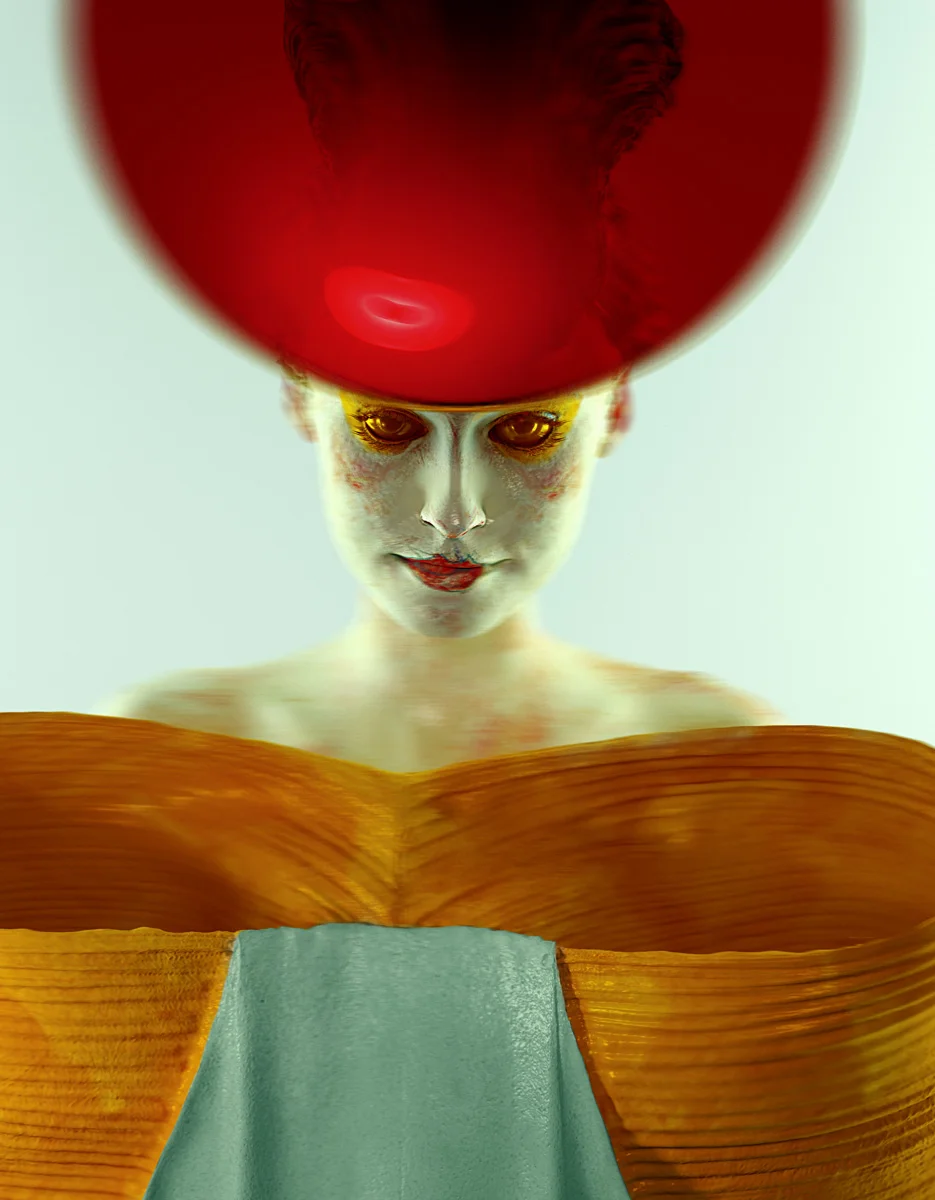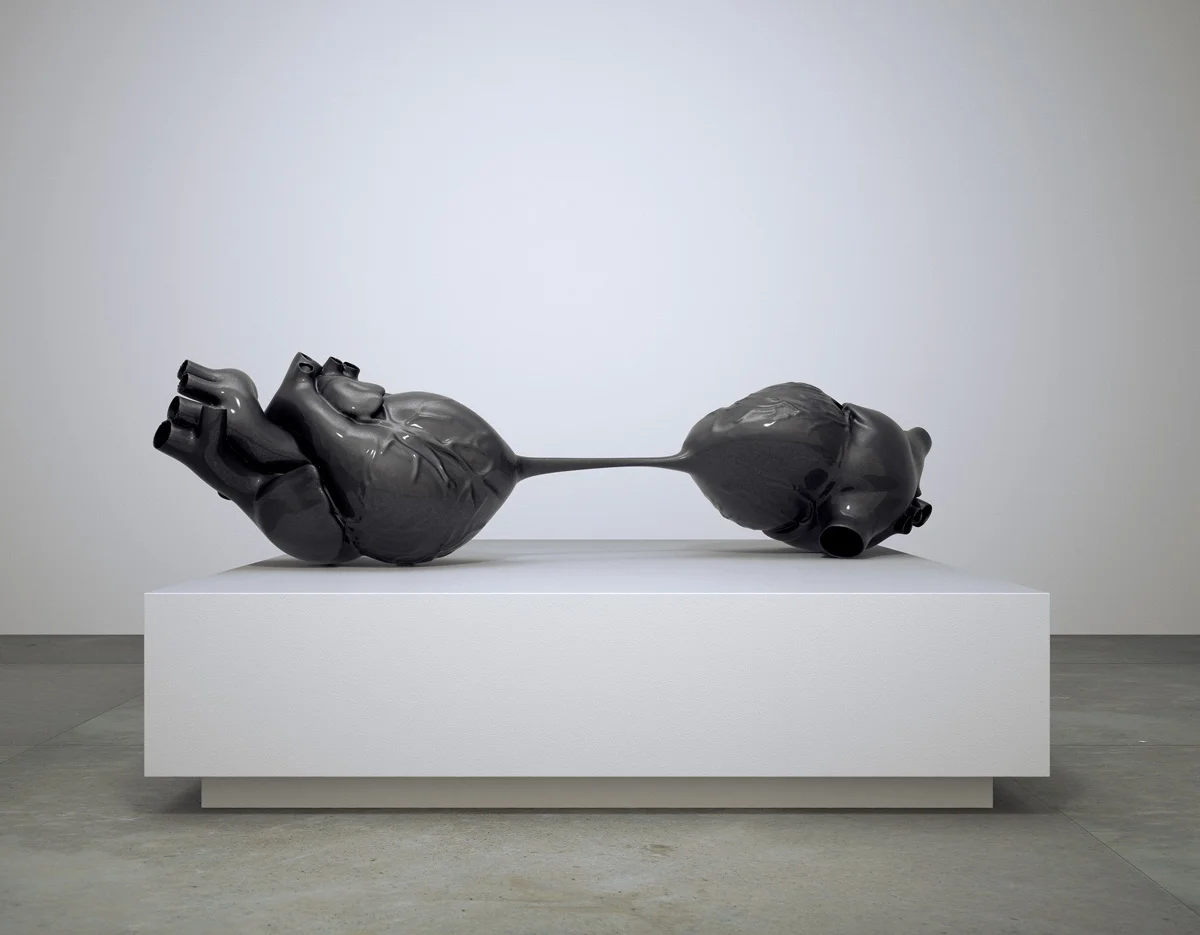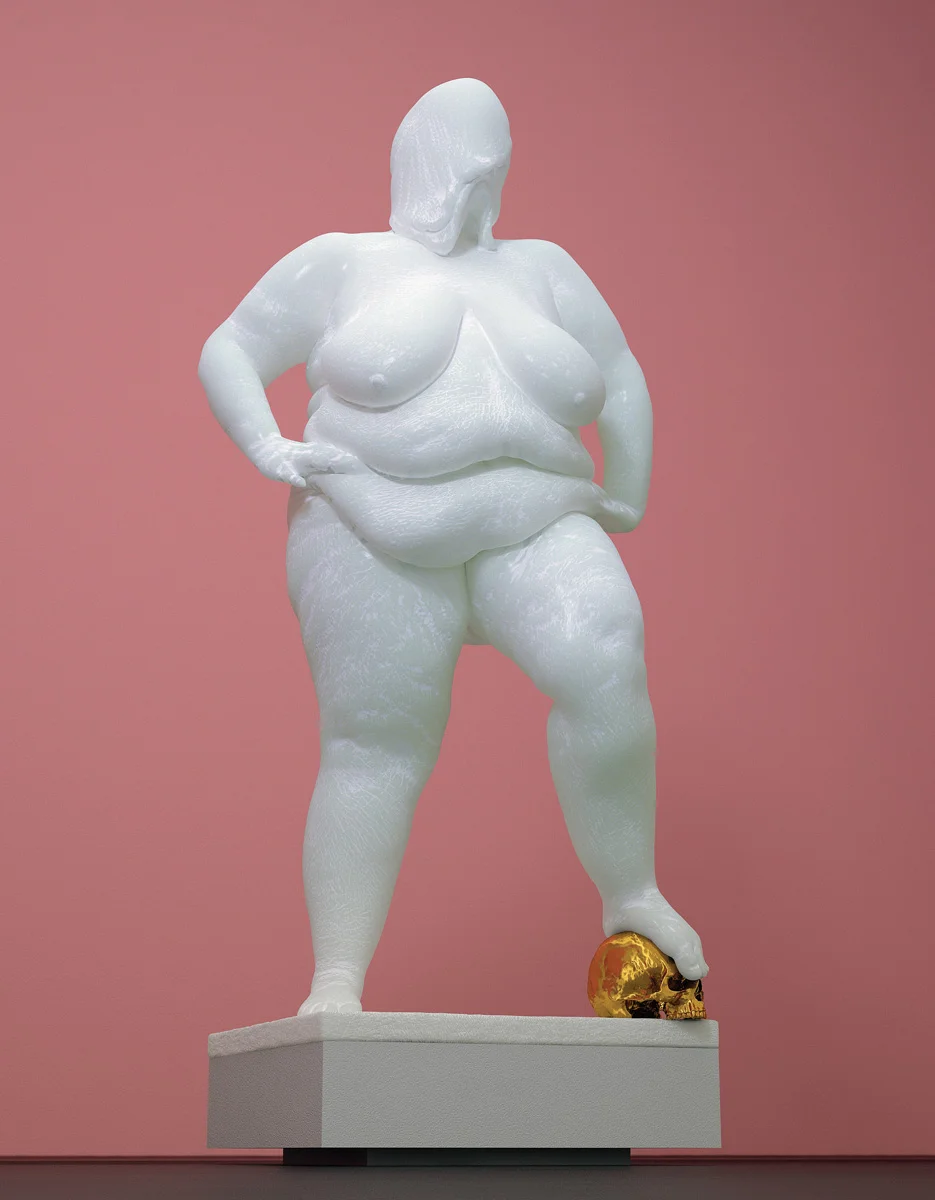
“Louise Zücker (after Picasso),” (2015). Courtesy the artist

“Ilja Couture (after Schiele),” (2015). Courtesy the artist.

“P(e)acemaker (a music instrument),” (2015). Stainless steel, painted. 260 x 60 x 60 cm. Courtesy the artist.

“Rammstein (concept),” (2016). Translucent white resin and gold plated aluminum. 300 x 143 x 105 cm. Courtesy the artist.

“A King’s Bed (Tomb for an anonymous artist),” (2014). Human carcass submerged in bronze and framed with marble. 260 x 83 x 170 cm. Courtesy the artist.
[](#)[](#)
Hedi Xandt
“My mind is really like a big cloud full of inspiration that mixes and merges, hence you will always find a lot of references to other art in my work”\*—Where contemporary artist Hedi Xandt sits across from his 2013 interview with Kultur22
Not all idols are false, yet falsehoods riddle all idols. Consider the whip- snap that accelerated UFC fighter Ronda Rousey’s brain into her skull, as the little-favored Holly Holm’s shin connected with her jaw—at once and immutably eradicating Rousey’s undefeated record. Rousey—the golden idol of fighting culture—was reduced in a single collision of flesh and bone into a ridiculed internet meme phenomenon.
Hedi Xandt’s art is poignant to such times. Golden skulls and contorted idols. Xandt has been drawn time and again to the skull for catalysis—to its confused dual identity as that of the macabre death’s head, and that of the brain’s savior.
Xandt’s work literally drips with opulence, yet there is a menace to it too. Something to hold high and celebrate, but which just might kick you in the head when you’re not expecting it.
This year the Hamburg-based Xandt had his work included in the Dries van Noten curated Inspirations exhibition at the Mode Museum in Antwerp. In 2014 he contributed a golden snake—nailed head-first to a marble plinth—for the New Republic magazine, in a lavish and venomous rendition of their trademark ampersand. Xandt is also the artistic consultant for TUSH Magazine.
Today Xandt spoke to Flaunt through a cloudscape accumulation of gilded packages of digital thought.
#### **Given that you often work in gold, what are your sentiments towards overt wealth in society?**
First of all, gold does not work for me as a symbol of wealth or money. I don’t use it to express riches. I look at it like the civilizations of the past did: it is a spiritual medium that portrays the glory of something higher and larger than life. Gold does not age, it won’t oxidize, erode, or decay like most other metals that have to be polished to keep their glow. It’s such a crass antipode to nature—an object made of gold may last forever, even if you destroy it or break it down. The “tiniest bit of gold,”\*.1 a nugget or dust, will always stand out. Gold is truly unique and I can see why indigenous cultures on the South American continent didn’t use it as currency, but as an element to glorify artifacts dedicated to their gods and spirits.
I don’t have any sentiment towards overt wealth in our society. It is present, just as the opposite is. What’s truly interesting is that most of that supposed wealth is fake—in various ways. Just like most of the gold we see, and that’s supposed to tell us how valuable something may be.
#### **Your sculptures are often adorned with spikes and seem dangerous to the touch, do you feel that some art should be untouchable?**
I don’t think these spikes tell you to stay away. They gaze back at you. Art, of all things, must be touchable. The question is: Do I have to touch it?
#### **Does the material determine the sculpture, or the sculpture determine the material? Which comes first in your process?**
It is a little bit of both, each material has its own qualities that you have to work with, especially if you intend to make a sculpture from it. Technology now allows us to create almost anything out of everything, so each approach is always an experiment.
#### **“My absolute favorite piece of yours is ‘Gods of the Grove.’ It’s grotesque, horrifying, and absolutely beautiful. Tell me more about it!”\*.2**
There’s no such thing in art as superiority.
#### **In what ways do you find musculature and the inner architecture of the body more beautiful than its outer form?**
I wouldn’t say musculature is more beautiful than skin or vice versa. We take our bodies for granted and we only think about our inner workings when there’s something wrong with it. But most of us don’t even have a concept of where it even comes from—the bones, the sinews, all the soft matter and their relationship to each other. I find it quite fascinating that people can be grossed out by organs and bones, displaying intense fear and alienation at the sight of a skull, even if it’s the one thing that keeps your brain safe.
There’re peoples in the world using the skulls of their loved ancestors as pillows—we put them in caskets below the earth and never see them again. It’s a bit sad.
#### **How do you characterize originality in art?**
I don’t believe in originality, I don’t believe in the genius. We’re all in a long row of individuals that created something to communicate with their environment. There’re as many images and concepts of the world as there are pairs of eyes. What counts is the emotion you feel.
#### **Has one of your works ever inflicted an injury upon you?**
Of course, every single one. It shows me I’m alive, and they are as well.
#### **\*** [Bang-Olsson, K. “What lies beneath: An interview with Hedi Xandt,” Kultur22, November 2013.](http://www.kultur22.dk/2013/11/hedi-xandt/)
#### **\*.1** [“Festive ruffled cardigan,” Love of Knitting, Winter 2010.](http://www.loveofknitting.com/articles/Festive_ruffled_cardigan)
**\*.2** [Kultur22, November 2013.](http://www.kultur22.dk/2013/11/hedi-xandt/) † _Original question read: In what ways do you think the contemporary aesthetic is superior to the classical, and in what ways is it inferior?_
